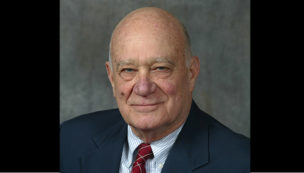How many Americans made informed judgments not to watch this year’s Super Bowl?
To reach that decision is to counter the most viewed sporting event in our nation.
My family joined me this season in a viewing boycott, as well as a year-long call for the abolition of tackle football.
That is a social reform journey I have been on for several years. Readers might recall my earlier, controversy-generating, columns taking that position.
One North Shore athlete sent two missives criticizing my views, and included, beneath his name, his line-backer jersey number from his Cornell football team.
During the past two years, family members pointed out that although I advocated ending tackle football (as one of several violent and dangerous sports), it seemed hypocritical that I continued to watch games.
Frankly, they shamed me into more principled conduct. During this season, I have not watched a single play, nor have I read a sentence of the voluminous football stories in any media source
When close friends were aware of what was transpiring during this season of complete abdication, several males wrote, phoned, emailed or texted, and asked whether I would be given an exemption to watch the Super Bowl.
Several guys offered to watch it with me, with a food fest, as in the past, and maybe skipping half-time entertainment, and recapturing faded glory in an old guys’ touch football game.
I declined.
However, I keenly appreciated their own sports’ journeys. I had been a part of them almost as long as Lincoln’s “four score” years.
Growing up in a “Little Italy” on the banks of the Hudson during the 1940s; like all the boys in our ‘hood, I was described as “sports crazy.”
Long before sociologists and psychologists analyzed American sports as a “masculinity right” and a “male rite,” we lived what they later depicted.
For guys, it was what you did during the game that defined you; for girls it was how you looked, and your support on the sidelines as a “cute” cheerleader.
Then, after games were played, males engaged in endless “ritual” discussions of sports stats, of favorite players, and of highlights from one’s own games and teams (e.g. see the play “That Championship Season”).
All of this was a component of the sexism of earlier generations. Girls were not involved in deeply competitive sports; into the 1970s, girls in college even played six-person basketball so there could be defensive and offensive players to reduce a full-court strain that caused young ladies to sweat.
Strides toward gender equity are to be celebrated, and females in recent decades have shown that they can be exceptional athletes. [We watched the film “Battle of the Sexes” while the Super Bowl game was played.]
For guys of the ‘40s, no sport was equal to football. Unlike a growing number of youngsters today who specialize in single sports, we played every sport as its season arrived.
My pals and I wanted to excel everywhere, but we early recognized that football mattered most.
That was reinforced by men in our town who continued to play “sandlot” tackle football when they were beyond age 40. They also formed “booster clubs” (not unlike Texas towns) for the football team.
Because almost none of them had graduated from high school, their pride was invested in boosting the success of our teen guys.
They raised money for jackets, watches and other awards when we won championships. They sponsored banquets to celebrate us and our coaches.
No other sport brought this support or recognition. The guys beyond high school age were courageous volunteer firefighters. In a town without a stadium or field lights, the firefighters brought their trucks to our turf at Tallman Mt. Park and turned the spot lights on the field so that our coach ”Big Nick Mottola” could better prepare us to do battle with the less ethnic communities.
We are all products of our socialization, and I and my pals grew up in a “class/identity conflict” environment before we (or the older guys) understood the dimensions of such experiences.
Our studies in school were a matter of casual cruise control, but as our Nonnas daily exclaimed, we were all “sports crazy.”
We eagerly devoted the bulk of our time and lives to developing our athletic skills – especially for football.
As an aspiring quarterback in 7th grade (our town had sort of a “minor league” prep for high school), I had anxieties because I feared that my right hand would not be big enough to hold and maneuver the ball for fancy trick plays that were part of the Tappan Zee varsity creative double-wing offense.
When the 1949 football squad was selected, I was one of two freshmen selected.
I went on to receive a varsity letter that year, even throwing a touch-down pass on my very first play (full disclosure: the pass went about eight yards, and senior tailback “Mercury Mercurio” ran 50 more yards to the end zone).
How could so auspicious a football beginning (akin to Tom Buchanan’s youthful memories in Fitzgerald’s “Great Gatsby” on Long Island) yield to total football protest and boycott? [For answers, see part 2 in my next column]



